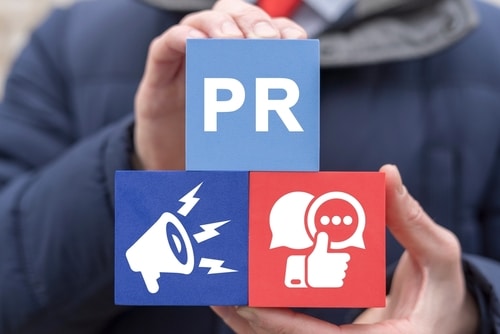Brand communities deepen customer engagement
In this era of digital channels overwhelming audience with myriads of messages from brands, fostering trust and loyalty has become even more of a necessity for business success. This need has given rise to the brand community - an online spot where customers engage with brands and each other, sharing insights, ideas, and feedback. These bring a potent opportunity to strengthen the ties between brands and their audiences amongst all the noise out there.
So… what’s a brand community?
A brand community, in the broadest sense, is a group of customers of significant number who aren’t just invested in your product or service, but also resonate with the lifestyles and values it represents.
This is not a new idea. For example, Harley Davidson’s Harley Owners Group (H.O.G), was formed in 1983 and still brings a loyal fanbase of riders together for rallies, who meet to connect with each other and share their passion for the brand.
But this concept has been revolutionised by the era of the internet and social media. Now that there are no geographical boundaries to prevent people from connecting with each other, what was once a limited, local experience can be a global, interactive network.
What’s more, when a brand harnesses a community, it can significantly impact that brand’s growth, reputation and relationship with their audience.
Where can you find them?
To get a sense of a brand community, you’ll most commonly experience them on brand accounts on big social networks: Facebook, Instagram, Twitter (now X) et al, where businesses create their official page or a group to share content, engage followers and encourage discussion.
The way these communities are built and run, and the tactics used for engagement, will differ depending on a brand’s strategy.
Frank Body, an Australian skincare brand known for its coffee-based scrub, has built a strong community on Instagram by powerfully utilising user-generated content, encouraging their followers to share photos using their tactile, grit-infused product on their skin with the hashtag #thefrankeffect. This not only creates visually engaging, authentic product focussed content – it also fosters a sense of belonging among users who get to see their images featured by the brand.
Some brands or verticals enjoy enough attraction to create a dedicated community platform, like cycling brand Rapha. On their website, their community forum Rapha Cycling Club is a virtual place for fans of the brand from all over the world to connect and share their cycling experiences, training tips and discuss Rapha products.
Another great example is legendary toy-brick brand LEGO, which has cultivated a community of enthusiasts through platforms like LEGO Ideas. Here, fans can submit their own designs, vote on others’ creations, and even see their ideas become actual LEGO sets. This interactive platform has not only kept customers engaged but has also fostered a strong sense of ownership and pride within the community.
There’s no one right way to do it, though – a brand community can be built wherever you find the audience, or, even, what causes cut-through. For example, Gucci have recently created the Gucci Garden virtual space on the 3D sandbox gaming sensation Roblox, offering a whole new kind of immersive community experience. The success of this remains to be seen, but the headlines it created were worth the effort alone.
Why build a brand community?
There are plenty of benefits of building a robust brand community.
They foster enhanced loyalty by developing genuine emotional connections between a brand and its customers. By engaging in a community with shared values, customers deepen their emotional attachment to the brand, increasing the likelihood of sustained loyalty.
Furthermore, brand communities lets a business directly interaction with their customers, allowing space for feedback, customer service, and collaboration. This not only helps increase loyalty but also gives customers a sense of empowerment when they feel that they are contributing actively to a brand’s narrative.
In addition to growing loyalty among existing customers, brand communities serve as a magnet for consumer acquisition. A vibrant community projects a sense of popularity and desirability around a brand, amplifying a positive image to resonate with potential audiences.
10 steps to building a brand community
Developing a successful community for your brand, and creating a sense of belonging and engagement, is a practical application of art and science. You need to apply a blend of engaging ideas, platform know-how and results analysis. Here’s a simple 10-step guide:
1. Identify your audience
Who are your customers? What are they looking for online? What do they care about? Tailor your community activity to resonate with your audience’s interests, values and needs.
2. Choose the right platform(s)
There are a plethora of social platforms, but it’s wise to be where your audience already thrives. Whether it’s the visually rich lanes of Instagram, the fast-paced fun of TikTok, more specialised interest-based forums, or a space on your website, the choice of platform can make or break your community.
3. Content is still king
Content plays a big part in inspiring visits and generating interaction from a community. Share stories that connect with audiences, offer behind-the-scenes glimpses to build authenticity, and provide content that brings value to your audience’s lives. Research what works on your chosen platform, and follow suit. Also, encourage user-generated content, and then amplify it to create a sense of shared experience and ownership.
4. Inspire interaction
If content is the fuel, interaction is the spark. Encourage and nurture it by driving discussion and inviting feedback, and create opportunities for the audience to get involved. Ask specific questions, stage live situations, like Q&A sessions and chats, run polls and create moments.
5. Listen. Respond. Listen.
Step in to the space and join in – when you create the expectation that you’ll reply, the audience will feel like you’re listening. This isn’t just about idle chatter – it’s about engaging in a meaningful dialogue with your customers, so respond to their comments and concerns with sincerity. This is fundamental in building trust and showing your audience that their voice matters.
6. Give exclusives
Exclusivity creates a sense of belonging. Offer your community members perks like early access to products, special discounts, or inside information. These benefits create a feeling of privilege, deepening connection with your brand.
7. Host events
A timetabled moment can work like magic to bring an audience to your virtual space, whether it’s an energetic live event like an interview, a performance or a Q+A, or the immediate connection of a webinar. These are visceral, shared experiences and opportunities to dramatically celebrate your brand.
8. Shine a spotlight on individuals
Recognition is a powerful tool in communities. Celebrate members in your community who are particularly active or contribute valuable content. This not only creates delight but also drives others to participate.
9. Keep it going
The key to a vibrant community is consistent engagement. Keep your community alive with fresh content and regular interaction. This consistency is important in keeping your audience engaged and involved, and your brand front-of-mind.
10. Grow with the feedback loop
Finally, familiarise yourself with the native reporting tools of your chosen platform. These will tell you data on things like user engagement, reach and the ripple effect on your chosen platform. If you have the budget, consider a third party platform like Hootsuite for more a deeper data dive. Also, your own social listening should let your community shape itself. Use the audience’s feedback to refine your products, services, and the community experience. This proves that your brand values its audience and will adapt to their needs.
Time to start building
It takes empathy, strategy and commitment to build a brand community. This journey, while challenging, is immensely rewarding as it transforms customers into loyal advocates and active participants in a brand’s story.
Running a brand community can transcend traditional marketing practices and be a powerful way to deepen customer engagement. In today’s marketplace, it’s not just beneficial to do so; it’s imperative.
And yet, in building these communities, brands should tread carefully. Striking a balance between audience aspirations and hard commercial objectives does require a consistent strategic approach. But in building
a genuine space for engagement, by allowing authentic relationships and trust to develop, and drawing on the benefits of open dialogue and transparency, a brand can create compelling proof that they understand, value, and are committed to growing with their audience.
Read all about it...
LATEST NEWS

How Startups Can Earn Big Media Coverage with Small Budgets

The Role of PR in the Health Tech RevolutionTransform Your Press Release


